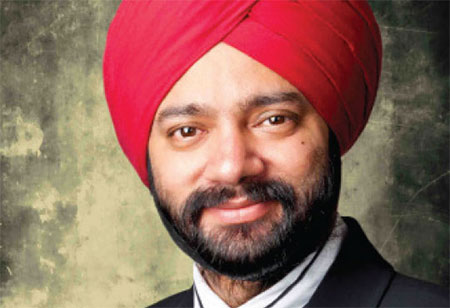Business Services
By Harjeet Khanduja, Vice President Human Resources,
Reliance
 Akhil was annoyed. Akhil spent his entire career in the Business Services division. The beauty of the business services division was that it had no impact on business. Maybe that’s what everyone perceived. His entire team worked 24x7 to ensure the continuity of business services. There was no appreciation. Instead any small slippage brought plenty of dishonour. He tried multiple times to establish a co-relation between business services and business results but that was like establishing a correlation between Mumbai rains and Sensex. More so, no one was really interested in contribution of Business Services. Thankless jobs are thankless because they fail to establish connection with Business.
Akhil was annoyed. Akhil spent his entire career in the Business Services division. The beauty of the business services division was that it had no impact on business. Maybe that’s what everyone perceived. His entire team worked 24x7 to ensure the continuity of business services. There was no appreciation. Instead any small slippage brought plenty of dishonour. He tried multiple times to establish a co-relation between business services and business results but that was like establishing a correlation between Mumbai rains and Sensex. More so, no one was really interested in contribution of Business Services. Thankless jobs are thankless because they fail to establish connection with Business.
Akhil shared his frustration with his wife Alka. Alka started laughing. She resonated that she felt the same way as a homemaker when her contribution in running the house was taken for granted. She explained that Business Services are as basic as electricity. When they are there, no one bothers to appreciate the presence or continuity. If there is an outage, a question mark is put on the competency of people managing these services. Alka suggested that Akhil must establish a mechanism to ask for a reaction, just after providing the service. This is a positive reinforcement technique to sensitize people. She uses it all the time after serving food. Sensitization brings appreciation.
Akhil recalled the last time he had hired a taxi through a mobile app. The app asked him to record his experience at the end of the ride. Akhil tried putting 4 stars, but then the app asked him to specify the problem with the ride. The app showed service level agreement in five simple pointers. Akhil could not point fault on those grounds and changed the rating to 5 stars. This was an expectation setting process. Also, Akhil remembered the taxidriver rated him as a customer. Akhil implemented the same practice for travel services inside the organization. The behaviour of the users changed. Data was clearly reflecting rogue users. When data started talking, noise in the system came down. Feedback is the biggest change agent.
Akhil extended the same practice across all services including Information Technology, Infrastructure, Connectivity, Mobility, Security, Payments, Procurement, Logistics, Travel, Accounting, Training, Recruitment and Administration. The first problem was to define service level agreements. While defining service level agreements, Akhil realized that services themselves were problems. All services were not as simple as travel services. The users participated in defining services. Multiple iterations with users impacted delivery of services. Akhil collated all these services and prepared a list of the standard services. Standardized services were faster to deliver. Standardization creates value.
Alka suggested that Akhil should define parameters for quality and delivery of services. These should be monitored and shared with all. Then only improvement will be visible and he will be able to evaluate the efficiency of interventions. While deciding on parameters, Akhil looked at the parameters used by other companies. Now, he had a data point which he was searching for since long. Some of his services were benchmark in the industry. Also, he knew the opportunities for improvement for other services. He was able to set improvement targets on those services. Comparison gives us a reason to improve.
Standardized services, performance parameters, benchmarks and targets paved an easy path for service level agreements. Service Level agreements were more like expectation setting exercise. Akhil was much more comfortable because tone of internal communication improved. Constant communication and service level reviews improved the experience of users as well as service providing employees. Structure enhances experience.
Akhil was relaxed. Alka counselled that when structure takes over, sensitivities of service providers get compromised. Services must not be run mechanically otherwise services become irrelevant and so are service providers. Basic sensitivities are built by identifying critical customers and being responsive to their needs all the time. Remember, event organizers keep the first few rows reserved for their VIP guests. Another basic tool for building sensitivities is to empower service providing employees by defining their authorities. These service providing employees go beyond boundaries based on business urgency and create experiences, which matter more than service level agreements. Relationships work better than agreements.
The best way of building sensitivities is to build a customer centric culture. Service providers must understand the business and more importantly how they affect business. Just like a homemaker makes effort to take a download of happenings at work every day. When there is an important meeting, homemaker ensures that clothes suit the occasion and wishes you luck. This approach shows personal involvement. When Business senses that you care for the business, then you become part of the business and not just a business service provider. Customer centric culture is the baseline for Business Services Management.


